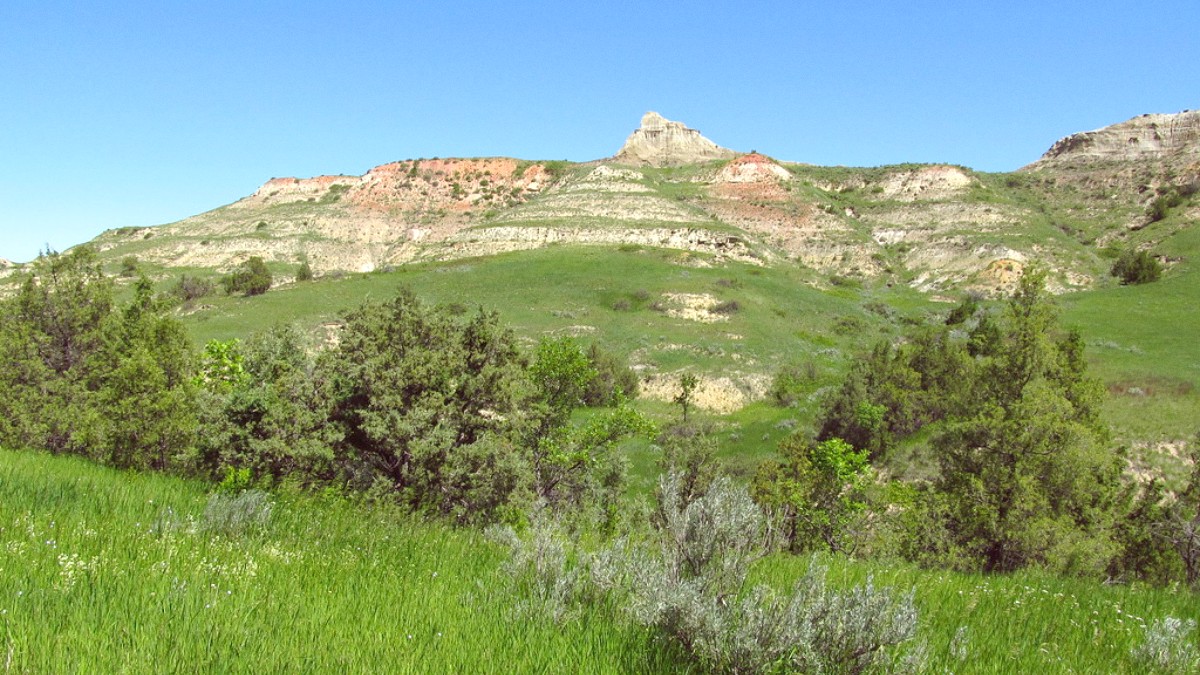
North Dakota, USA
The park sits in the rugged Badlands of western North Dakota. These distinctive geological formations, characterized by steep canyons, buttes, and mesas, dominate the landscape. The Little Missouri River winds its way through the park, carving pathways and shaping the unique terrain.
Theodore Roosevelt National Park presents a comprehensive immersion into the badlands ecosystem and the history of one of America's celebrated presidents. This park is more than just scenic views; it is a journey into the heart of America's rugged past and a testament to conservation.
The park comprises three separate units: the South Unit, near Medora, the North Unit, closer to Watford City, and the remote Elkhorn Ranch Unit. This geographical setting yields a diverse ecosystem, moving from river bottom forests to mixed-grass prairies and the dramatic Badlands.
Explore scenic drives in the South and North Units for stunning views and wildlife observations. Hike a wide range of trails, from easy nature walks to challenging backcountry treks. Capture dramatic sunrises, sunsets, and star-filled night skies over the badlands. Medora, adjacent to the South Unit, presents dining, lodging, and entertainment like the Medora Musical.
The park appeals to nature enthusiasts seeking vast open spaces, unique geology, and abundant wildlife. History enthusiasts appreciate the direct connection to Theodore Roosevelt's formative years and his conservation legacy. Outdoor enthusiasts discover opportunities for hiking, biking, horseback riding, and camping. Families enjoy engaging programs, accessible viewpoints, and exciting wildlife encounters.
Colorful badlands formations, petrified forests, unique clinker (scoria) rock.
Free-roaming bison, wild horses, prairie dogs, mule deer, various bird species.
Theodore Roosevelt's Maltese Cross Cabin, landscapes shaping his conservation ethic.
Dramatic sunrises, sunsets, and star-filled night skies over the badlands.
Medora offers dining, lodging, and entertainment like the Medora Musical.
Theodore Roosevelt National Park displays a blend of rugged beauty, American history, and a chance to reconnect with the wild. It is a testament to the power of nature to inspire and transform. Its expansive northern plains and dramatic badlands leave a lasting impact on visitors.
Explore colorful badlands formations, witness petrified forests, and encounter unique clinker (scoria) rock. The park's elevation ranges from 2,000 to over 3,000 feet, providing broad views.
Observe free-roaming bison, wild horses, prairie dogs, mule deer, and various bird species. The Little Missouri River winds through, carving pathways and shaping unique wildlife habitats.
Plan your adventure to Theodore Roosevelt National Park, where the spirit of the Badlands and a president's legacy await your discovery.
Preparation for your journey includes awareness of information, from climate patterns to safety protocols. A well-informed approach elevates your visit.
North Dakota experiences distinct seasons, each offering different advantages and challenges. Understand the seasons and what to anticipate.
Hot days (70-90°F), frequently over 100°F. High humidity. Afternoon thunderstorms with heavy rain, lightning, sometimes hail.
Mild to cool (40-70°F). Drier weather, changing foliage. Pleasant for exploring with fewer insects. Unpredictable weather.
Cold (0-30°F), often below zero. Snow cover, strong winds. Many park roads close, limiting access.
Vigilance for common health concerns and safety protocols contribute to a healthy visit.
Accommodation: $14-20 (camping). Food: $20-30 (self-prepared). Total: $40-70 per day.
Accommodation: $100-200 (hotel/motel). Food: $50-80 (mix of dining/self-prepared). Total: $200-350 per day.
Accommodation: $250-500+ (upscale). Food: $100-150+ (fine dining). Total: $450-850+ per day.
Purchase this annual pass for $80 if you plan to visit multiple national parks within 12 months. It pays for itself quickly.
Utilize park campgrounds for significant accommodation savings. Pack your own lunches and snacks to save on meal costs.
Visit during shoulder seasons for potentially lower hotel rates and fewer crowds. Participate in free ranger-led talks and walks.